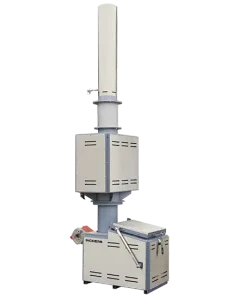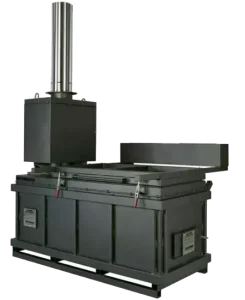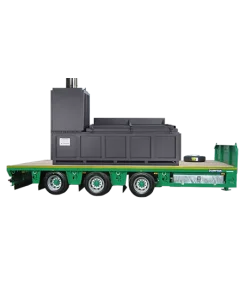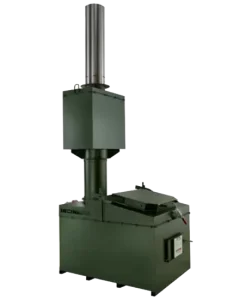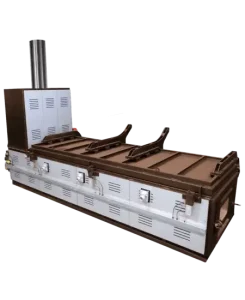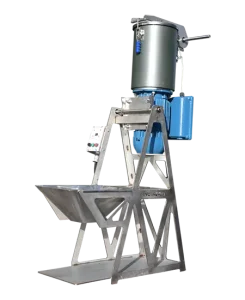Incineration has played an important role in waste disposal history for thousands of years and reflects humanity’s ongoing struggle with waste management. The practice of burning waste has evolved significantly over time, from simple open-air burning to advanced and highly engineered systems.
We highlight incineration’s historical significance by tracing incineration through the ages, from early historical waste management to the sophisticated process we know today.
Incineration: A Historical Overview
At its most basic, waste incineration is the process of burning waste material at high temperatures to reduce its volume and toxicity. The concept of incineration is not new and likely began shortly after the discovery of fire itself.
Looking at incineration through ancient times, early humans would have disposed of waste materials by simply piling them up and setting them alight. This basic form of open-air incineration was the primary method of waste disposal for thousands of years across many cultures.
Over the next several centuries, historical incineration methods continued to be used as an essential means of hygiene and waste management by the Romans, Egyptians, Native Americans, and in mediaeval Europe.
Incineration in the Middle Ages
The Middle Ages saw little change in incineration practices over time. However, as populations grew and cities expanded, waste management became a pressing issue. Communities would gather waste and burn it in open spaces or pits to reduce its volume and eliminate odours.
These historical waste disposal solutions were far from efficient and often led to uncontrolled fires and smoke that could harm health and the environment. The process was not designed for energy recovery or emission control, which are key features of modern incineration processes.
Industrialisation and Incineration Technology History
There were rapid developments in incineration technologies as a result of the Industrial Revolution. With mass urbanisation and factory production, cities generated far higher quantities of municipal and industrial waste. Open burning of rubbish heaps was no longer a practical solution.
Early municipal incinerators were brick-lined cell furnaces that improved the burning efficiency and capacity over basic open pits. However, they still had no effective means to control emissions, becoming notorious for releasing toxic ash and noxious fumes. Opposition from the public over the damaging health impacts eventually led to many municipal incinerators shutting down at the start of the 20th century.
Incineration Advancements in the 20th Century
In response to pollution concerns, there was an evolution in the incineration process, with new incineration technologies emerging in the 20th century that transformed waste combustion’s history.
Waste-to-Energy
The introduction of the first waste-to-energy (WTE) at the end of the 19th century marked a turning point in the waste-to-energy evolution. This process involves burning waste at high temperatures to generate heat. This heat produces steam, which drives a turbine to generate electricity.
WTE plants became increasingly popular in the mid to late 20th century as they offered a way to manage waste while also producing a valuable resource – energy.
Pyrolysis and Gasification
In the 20th century, new waste conversion techniques like pyrolysis and gasification emerged as alternatives to traditional incineration. Pyrolysis involves heating waste without oxygen, providing a more efficient and less polluting thermal treatment method. Gasification was also developed as a process using controlled oxygen to convert waste into a combustible syngas, which could then be used to generate electricity.
These advancements marked a shift in perspective, from viewing waste as a problem to be disposed of, to seeing it as a resource to be utilised.
Waste Incineration Innovations of the 21st Century
Today’s incinerators are highly engineered facilities with advanced combustion systems for maximum efficiency and environmental protection.
Key features include:
- Advanced systems to filter the air and clean flue gases, including acid gas scrubbers, particulate removers, and activated carbon injection to capture toxins
- Computer monitoring and control of internal temperature, waste throughput, and emissions
- Heat recovery systems that convert heat into electricity or power for heating or cooling
- Advanced ignition systems and internal refractory lining to optimise incineration
- Automatic systems for handling ash and leftover waste
The evolution of incinerator design has minimised air emissions to safe, non-toxic levels.
The Future of Waste Incineration
While recycling has reduced the levels of some plastic and paper waste, municipal solid waste (MSW) incineration is still projected to grow globally.
New technologies are focused on maximising energy recovery and converting more waste into usable heat, electricity, and fuels. Some key trends include:
- Improved gasification and pyrolysis systems that produce more energy from rubbish with lower emissions
- Integrating incineration with combined heat and power (CHP) systems to support local heating and cooling networks via recovered waste heat
- Using biochar from pyrolysis systems to enhance soil fertility and reduce carbon dioxide levels in the atmosphere
There’s also a growing interest in integrating incineration with recycling and composting. This approach to waste management aims to achieve a circular economy where waste is minimised, and resources are reused and recycled.
Inciner8: Writing the Next Chapter in Incineration History
Incineration’s history and progress have been marked by continuous innovation and improvement. From the methods of incineration in the past to the advanced technologies of today, the evolution of incineration is a testament to our ability to adapt and improve.
At the forefront of these advancements is Inciner8. We’re a globally respected waste incinerator manufacturer, providing innovative solutions for medical, agricultural, and general municipal waste management. Our range incorporates pollution control systems and heat recovery options as part of our commitment to environmentally friendly incineration. Contact the Inciner8 team today for more information on our industrial waste solutions.

